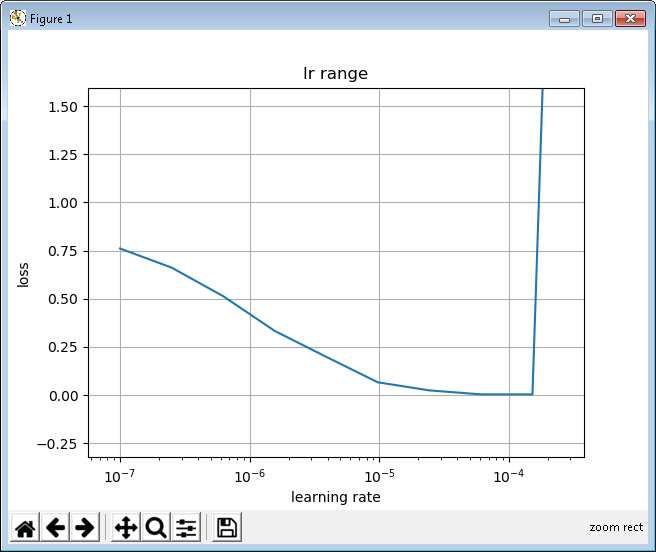I have a dataset of 2 classes, both containing 2K images. I have split that into 1500 images for training and 500 images for validation.
This is a simple structure for testing purposes, and each image is classified depending on the colour of a particular pixel. Either Green or Red.
I have run this model many times and I find that sometimes the models gets low loss/ high accuracy within a few epochs, but other times it gets stuck at accuracy 50%.
The datasets are exactly the same each time with only difference coming from model.fit "shuffle" option.
I tested the LR Range first:
and I "cycle" the learning rate through an appropriate range.
model = keras.Sequential([
keras.layers.Dense(112, activation=tf.nn.relu, input_shape=(224, 224, 3)),
keras.layers.Dropout(0.4),
keras.layers.Flatten(),
keras.layers.Dense(3, activation=tf.nn.softmax)
])
LRS = CyclicLR(base_lr=0.000005, max_lr=0.0003, step_size=200.)
model.fit(train_images, train_labels, shuffle=True, epochs=10,
callbacks=[checkpoint,
LRS],
validation_data = (test_images, test_labels)
)
Why does the model sometimes NOT get a good fit?
EDIT 1
Re Serali's suggestion:
myOpt = keras.optimizers.Adam(lr=0.001,decay=0.01)
model.compile(optimizer=myOpt, loss='categorical_crossentropy', metrics=['accuracy'])
reduce_lr = keras.callbacks.ReduceLROnPlateau(monitor='val_loss', factor=0.2,verbose=1,patience=5, min_lr=0.00001)

